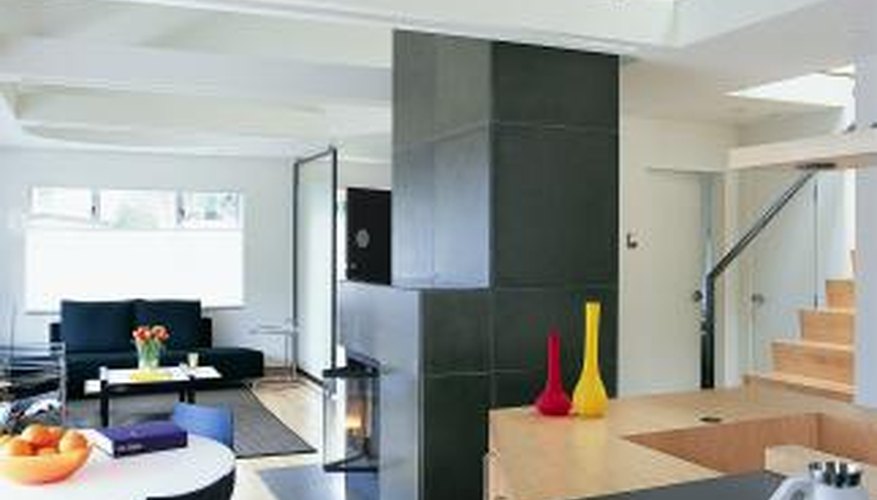Laminate flooring, which is crafted from composite wood and covered in a waterproof coating, installs over a subfloor in a similar manner to hardwood flooring. The main difference in the installation method of the two types of floors is that, while hardwood flooring is permanently affixed to the floor with adhesive and hardware, laminate flooring is generally laid over the subfloor without being permanently affixed. Since laminate flooring is usually installed after kitchen cabinets, you must cut the flooring to fit around the bases of the cabinets.
Lay the laminate flooring out against one straight wall of the room. Follow the directions included with your particular flooring, but in general, put down one row of laminate end to end and lay subsequent rows next to the first, locking the built-in tongues and grooves in the edges of the planks together until you reach the cabinets. Lay flooring out to the edges where they meet the cabinets.
Measure the space left between the last flooring plank in the row and the kitchen cabinets when you reach the cabinets to determine the width for the last plank. If you have only 3 inches of space left between the edge of the flooring plank and the kitchen cabinets, measure 3 inches in at each end of the laminate plank from the side with the tongue and then add an additional 1/4 to 1/2 inch to the measurement, depending on the size of the spacers that came with your flooring so that the plank won't fit directly against the cabinets.
- Laminate flooring, which is crafted from composite wood and covered in a waterproof coating, installs over a subfloor in a similar manner to hardwood flooring.
- If you have only 3 inches of space left between the edge of the flooring plank and the kitchen cabinets, measure 3 inches in at each end of the laminate plank from the side with the tongue and then add an additional 1/4 to 1/2 inch to the measurement, depending on the size of the spacers that came with your flooring so that the plank won't fit directly against the cabinets.
Put a straight edge down between the marks at each end of the flooring plank and draw a line between the marks. Cut the flooring plank along the line with a circular saw to remove the excess laminate.
- Put a straight edge down between the marks at each end of the flooring plank and draw a line between the marks.
- Cut the flooring plank along the line with a circular saw to remove the excess laminate.
Lay the flooring piece into place just as you laid the other planks. If the bottom of the kitchen cabinets do not provide you with enough space to manoeuvre the edge planks against the cabinets, pull up the last full row of planks by the cabinets, use the circular saw to remove the groove feature on the edge of the board so that the side of the board is flat, and cut the tongue piece off of the edge plank that you've already cut and lay the boards flush against each other. Squeeze some wood glue into the space between these cut boards and push them together until they hold.
Cover the gaps at the sides of the laminate flooring beneath the cabinet with the same standard floor trim you used for the rest of the wall. If the floor trim is too long for the cabinets, cut it to size with the circular saw.
